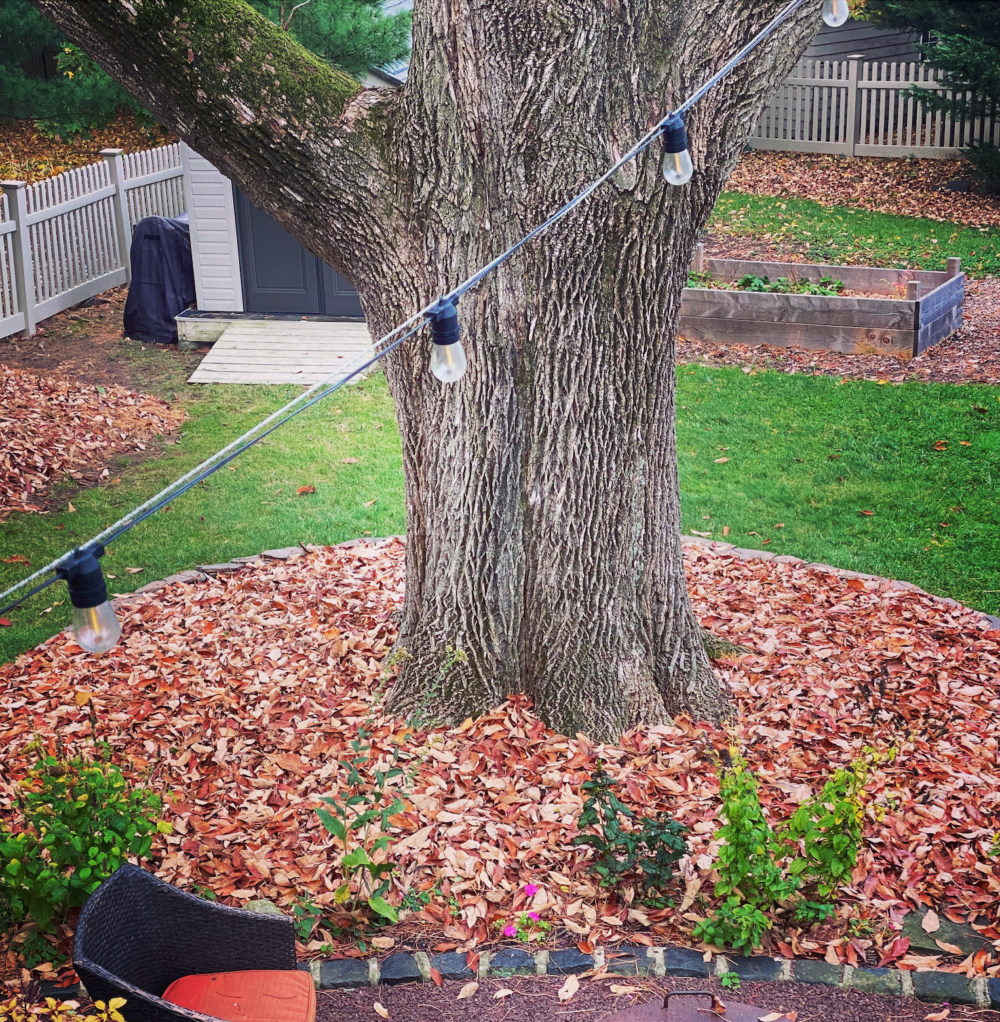We have much more to do and your continued support is needed now more than ever.
The Life of Ants in Your Garden
As almost every U.S. gardener knows—they are out there. They are out there in teeming millions, they are out there in colonies and queendoms. They are out there on the earth, on the shrubs, on the trees. They are ants, and they are out there.
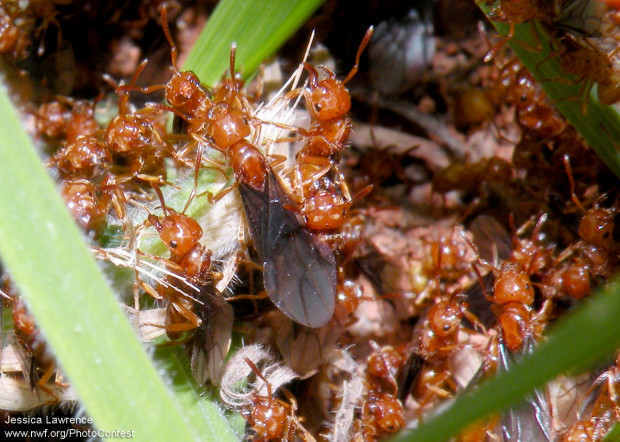
Ants: What They Are
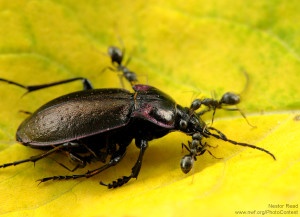
- They’ve given rise to more than 20,000 species, indicating great plasticity in the game of survival;
- They thrive in land environments all over the globe, with the exception of Antarctica and some islands, a sign of demonstrative adaptability; and
- They are numerous, indicating that they can have a marked effect on their habitat; Harvard University biologist and ant expert E.O. Wilson has estimated that the world’s living ants number between 1 quadrillion and 10 quadrillion (which is to say, between 1 with fifteen zeros and one with 16 zeros) and that all the ants in the world taken together weigh as much as all the people.
The Lives of Ants
Ants live in groups ranging from a few dozen that reside in natural cavities to sprawling colonies composed of millions. The ant species you’re likely to encounter in your backyard favor large colonies.
Breeding and social behaviors vary dramatically among species, but backyard ants, divided loosely into red and black species, fit a pattern that goes something like this:
- During the annual breeding season, newly mature, winged females and males take flight, leaving their home colony.
- Males usually find a convenient perch on which to gather and emit a scent that attracts females, each of which, depending on species, will mate with one to a dzoen or more males.
- Each female then flies off in search of a suitable place to establish her colony. Once satisfied that she has found such a site, the female breaks off her wings (quite a metaphor for sacrificing one’s freedom on behalf of the next generation), digs in and begins laying the eggs that will produce the workers that will build the colony.
Ant Colonies
Having been raised by the female, her first descendants get to work enlarging the nest, locating and bringing in food, and caring for the eggs that the female, which we generally call a queen, continues to lay (Note: some colonies have only one queen, some several, and some none, with eggs laid by breeding female workers).
As a queen reproduces, a colony can grow to millions of ants, most of them sterile, wingless females belonging to different castes, such as workers that remove dead ants from the nest and soldiers that defend the colony.
Workers generally live for one to three years, but colonies can last for as much as 30 years. Queens may last equally long. Males, whose lives consist of eating and breeding, don’t really have it as good as it sounds—they live for only a few weeks.
A Worker’s Life
Like a maid in waiting, a young worker devotes its early life to tending the queen and her young. As she matures, the worker turns to such tasks as excavation and going outside the nest to find food.
Tending eggs and young is a full-time job. Eggs develop best when kept at controlled temperatures within the nest, so workers move eggs around as needed to stay within proper parameters. After hatching, the larvae are helpless. Workers feed them with a liquid they disgorge as well as with bits of plant and animal matter. Some ants capture and store prey in the nest and carry the larvae to the victims for feeding. In some species, the type of food the larvae receive determines whether they will grow up to be queens or workers.
Older workers forage for food outside the nest. Leaving the nest can be dangerous, which is probably why older ants do the foraging—they aren’t going to last much longer, so losing them to a bird, toad or other predator isn’t as critical as losing a vibrant, young worker.
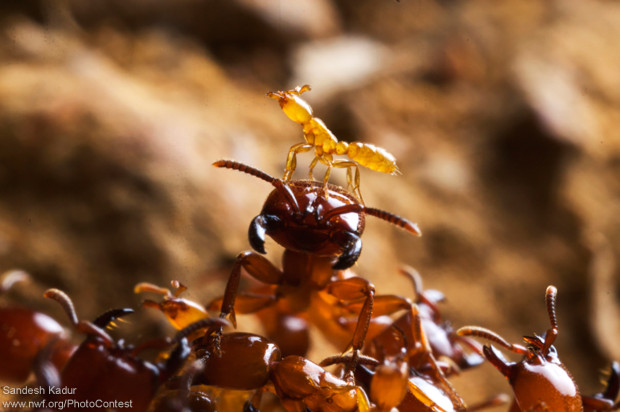
Making Scents of Ants
When foragers find a good food source, they leave a trail of scent as they return to the nest. Other ants can follow the scent to the food. Scent plays other roles in ant life. Queens emit a scent that causes workers to feed larvae in a way that creates more workers. If a queen stops producing this scent, the workers will begin preparing larvae in a way that creates new queens. In some ants, if an individual is crushed, it releases an odor that puts other ants in attack mode.
Ant attacks can be painful. Some species have venomous bites and some bear stingers. The bullet ant of Latin America has the most painful sting of any known insect.
Ants as Farmers and Ranchers
Although most ants are hunters or scavengers, some are farmers or ranchers. Latin American leafcutter ants, for example, collect leaves that they store in their colonies and use as fodder for growing a fungus that is the ants’ exclusive food. Other ant species bring insects, such as aphids or certain types of butterfly caterpillars, into the nest, where they care for and feed the captives. In turn, the ants eat secretions produced by their “livestock.” Some ants “herd” caterpillars in and out of the nest, taking them daily to “pastures” where the livestock can feed, then returning them to the nest.
Ants, Plants and Gardeners
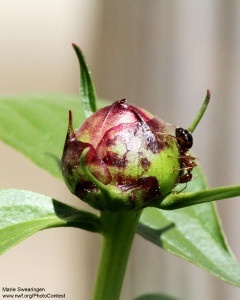
Ants help natural plant communities to survive by feeding on plant pests and by carrying seeds through forests and grasslands, helping to disperse an estimated 3,000 plant species, including trilliums, violas, corydalis, bleeding heart, trout lilies and most violets.
Some plants coordinate flowering and fruiting with periods of peak ant activity, taking full advantage of the insects, and some produce seeds rich in fats that attract the ants, which bring the seeds into their nests. The ants feed the fat to larvae and discard the rest of the seed, allowing it to grow in the enriched soil of an anthill waste dump.
Ants help protect many garden plants. For example, peony blooms secrete a sweet fluid that attracts ants, which feed on the substance and protect the flowers from other insects.
Ants also serve as food themselves, eaten by predatory insects, spiders, frogs, lizards and birds, among other creatures. They constitute a large part of the diet of some North American bear species.
In North American backyards, ants may create aphid sanctuaries, protecting the aphids living on an individual tree or other plant and moving the aphids among various feeding sites. The ant’s habit of protecting aphids may not endear them to gardeners trying to free roses or other plants of the sap-sucking insects, but attempts to destroy ant colonies are usually counterproductive. When a nest is destroyed, the ground is simply cleared for invasion by another queen, and there are always going to be other queens in the offing. To keep ants from maintaining aphid herds on shrubs and trees, try painting stems and trunks with a sticky fluid or wrapping the bases of the plants with a sticky-surfaced tape.
![]() Want to make the most out of gardening, and help wildlife (even ants!)? Become a wildlife gardener with the National Wildlife Federation. It’s free and you’ll get great wildlife gardening tips and learn how to certify your yard as an official habitat.
Want to make the most out of gardening, and help wildlife (even ants!)? Become a wildlife gardener with the National Wildlife Federation. It’s free and you’ll get great wildlife gardening tips and learn how to certify your yard as an official habitat.



















